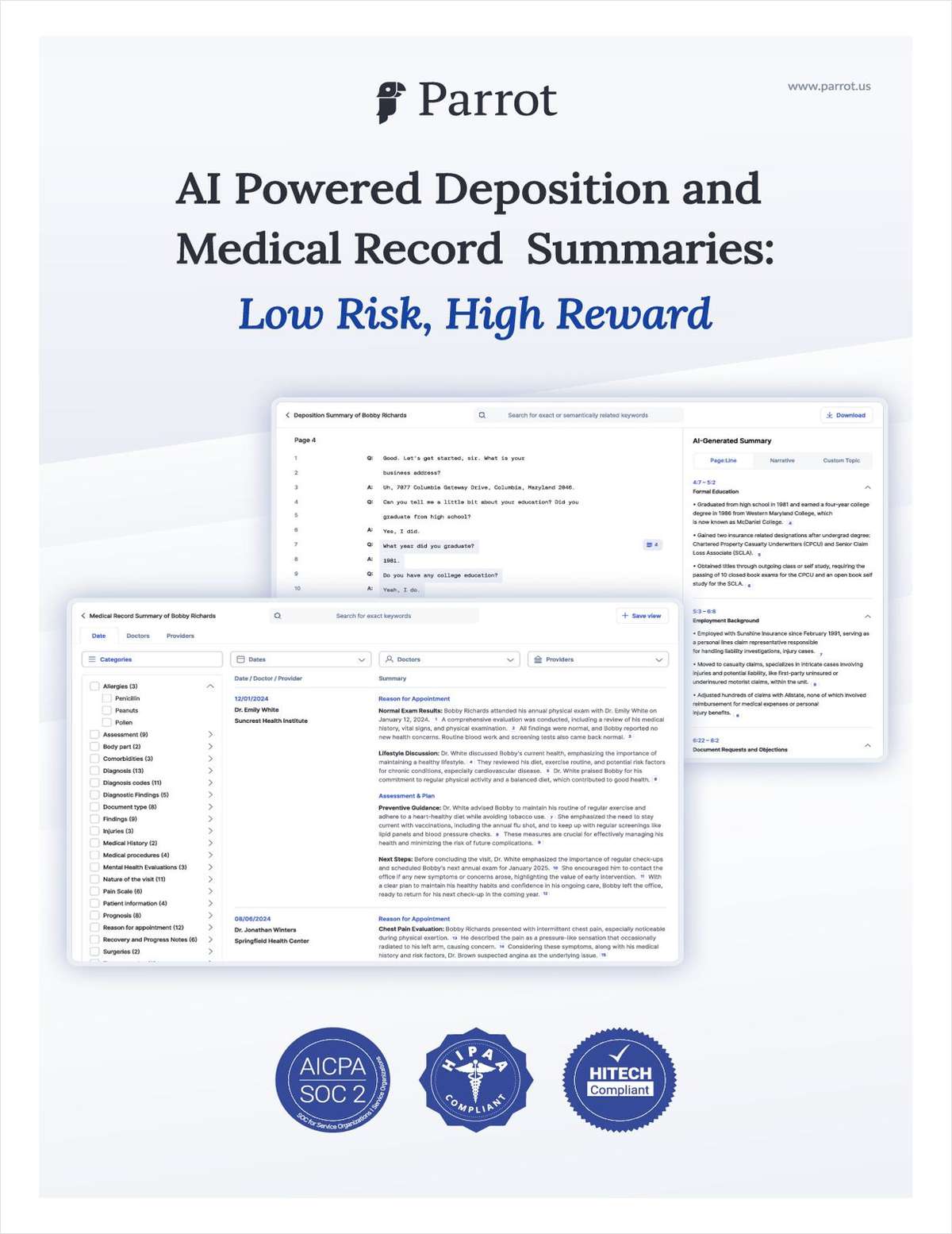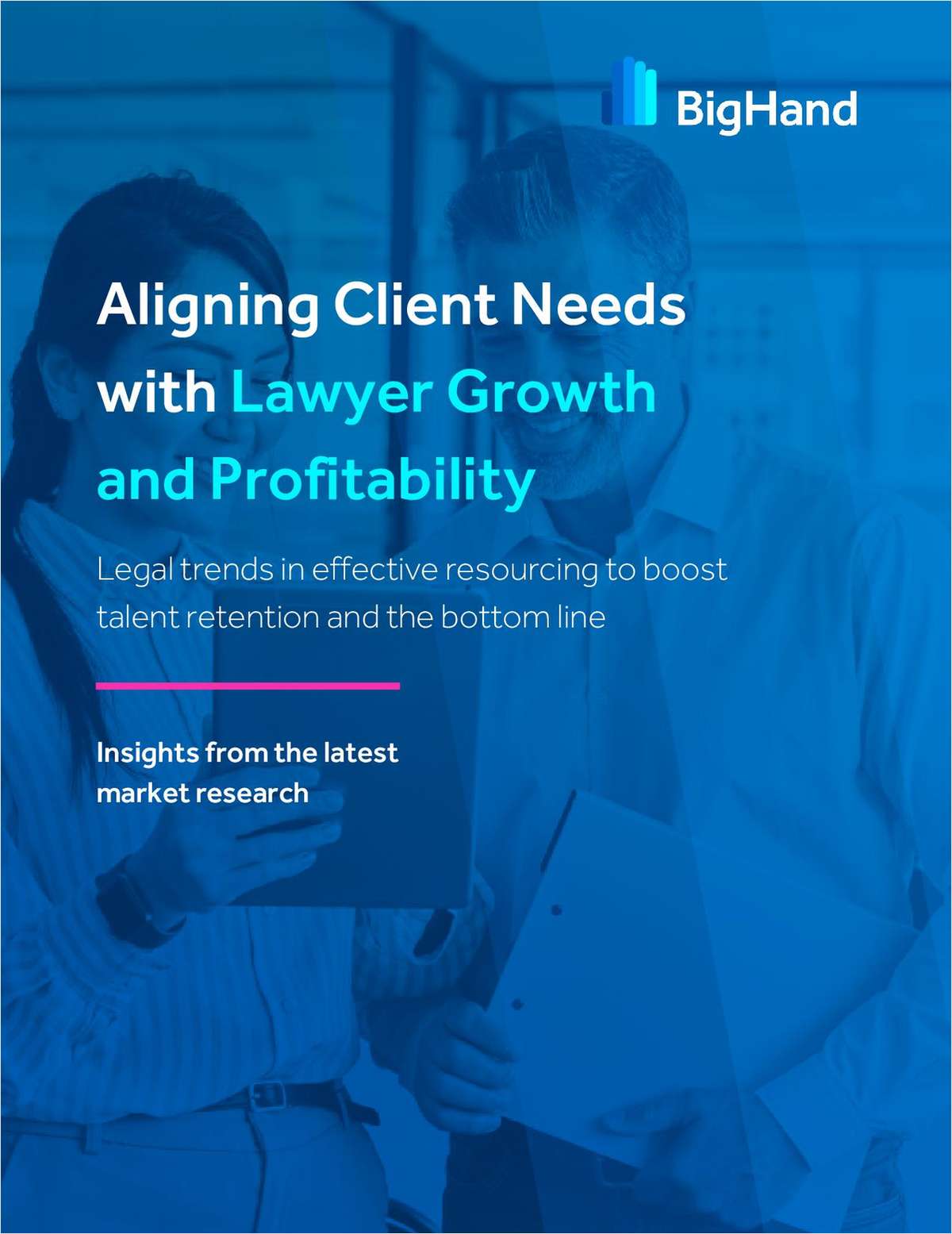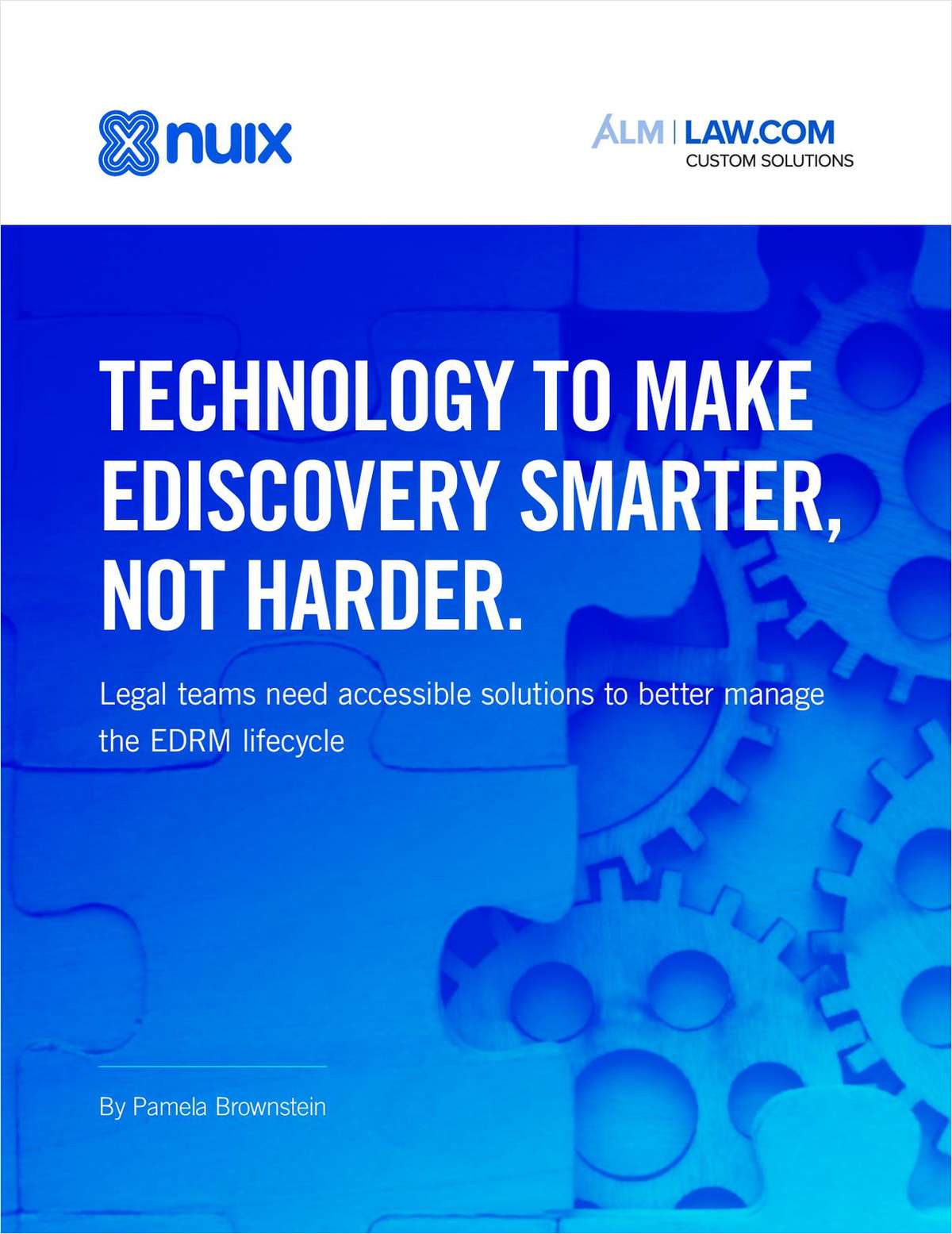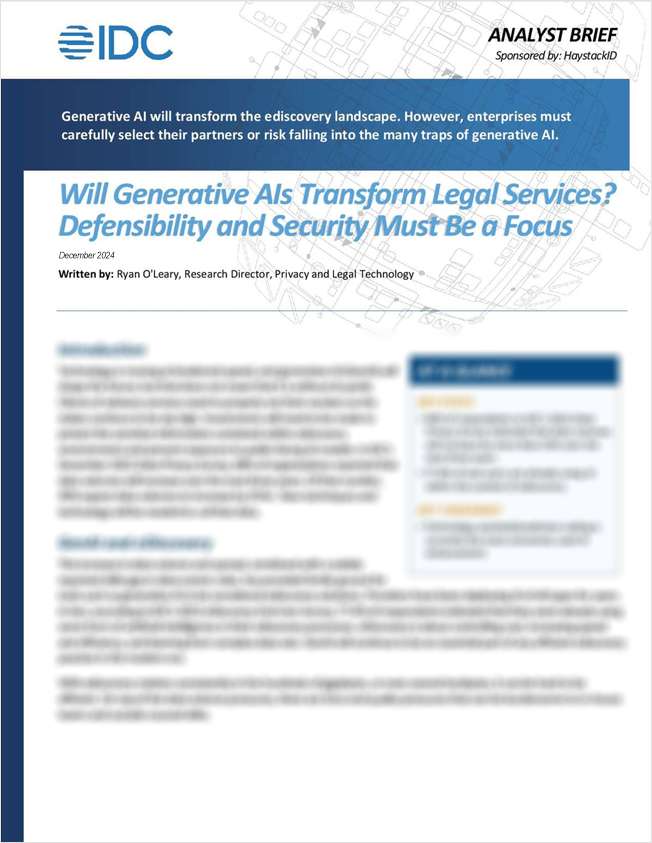33. The Risk to Your Insurers Isn't the Work You Do, It's How You Do the Work
Risk Series Part 3 Our profession is a minefield of risk, and the frequency and severity of malpractice claims grow year-on-year. Insurers live at the very end of the process. They exist to clean up the mess when it goes wrong. As we shall see in this lesson, that gives them a very different perspective on risk from law firms and attorneys.
July 05, 2024 at 11:41 AM
3 minute read
The original version of this story was published on Lean Adviser
This lesson continues our series on "risk" as we turn our gaze onto insurers. By this, we don't just mean professional indemnity providers, but everyone involved in the insurance of law firms, such as brokers and law firm risk managers.
Our profession is a minefield of risk, and the frequency and severity of malpractice claims grow year-on-year. Insurers live at the very end of the process. They exist to clean up the mess when it goes wrong. As we shall see in this lesson, that gives them a very different perspective on risk from law firms and attorneys.
The insurer's view of malpractice risk can be summarized in two words: Downside only. Insurers don't get the shiny new clients, the hefty transaction fees or the eye-watering compensation packages which exist in the law firm world. These upsides are all reserved for the lawyers.
Also, insurers and law firms have a different field of vision around risk. Insurers have a broader view. They see the outcomes of an array of risks in the form of claims across markets. From there they can reverse-engineer the law firm's work to identify the root cause. That's great, it's important and it's always a learning point. But it's too late.
The field of vision of the partner or associate is much narrower. From the outset, they can see the assignment and the fee-potential. But the associated risks aren't always in their direct line of sight — indeed many of them are hidden. Different viewpoint, big disconnect.
This leaves insurers in an invidious position. They can identify risk, but they can't mitigate it directly. Their next best option is to go to law firms with training on the most conspicuous risks. Most of us have had the training and can all recite the main risks: on-boarding, compliance, conflicts, money laundering, sanctions, unworthy clients and of course attorney mistakes. These days we can add tech and AI to that list, as we shall explore in the next lesson.
There is, however, a common root cause which runs through all of this. Risk-avoidance at law firms is largely focused on clear and present dangers. It doesn't address hidden dangers, many of which share a common root cause — the routine execution of everyday tasks by attorneys. It's not so much the work lawyers do, it's how lawyers do the work.
As we often discuss in Lean Adviser, methods matter. At one end of the paradigm is the attorney, doing their best, at the service of the law firm and the clients. At the other end is the insurer, hoping that the lawyer's methods are safe. It's hardly surprising then that insurers encourage their insured firms to equip the attorneys with the Lean Adviser tool set for the efficient, effective and safe practice of law.
NOT FOR REPRINT
© 2025 ALM Global, LLC, All Rights Reserved. Request academic re-use from www.copyright.com. All other uses, submit a request to [email protected]. For more information visit Asset & Logo Licensing.
You Might Like
View All
Former Federal Judge Christopher Conner Joins Saxton & Stump as Attorney and Shareholder
2 minute read
Fellows LaBriola LLP is Pleased to Announce that Alisha Goel Has Become Associated with The Firm
1 minute read
Longtime AOC Director Glenn Grant to Step Down, Assignment Judge to Take Over
4 minute read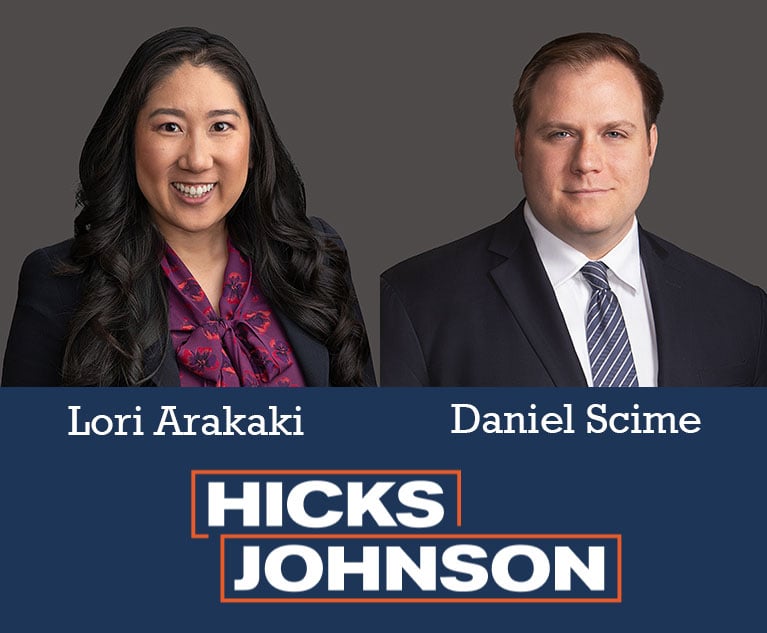
Hicks Johnson Promotes Lori Arakaki and Daniel Scime to Firm Partnership
2 minute readTrending Stories
- 1Lawyers' Phones Are Ringing: What Should Employers Do If ICE Raids Their Business?
- 2Freshfields Hires Ex-SEC Corporate Finance Director in Silicon Valley
- 3Meet the SEC's New Interim General Counsel
- 4Will Madrid Become the Next Arbitration Hub?
- 5‘Ripe for SCOTUS’: Ruling Creates Circuit Split on NLRB’s Expanded Monetary Remedies
Who Got The Work
J. Brugh Lower of Gibbons has entered an appearance for industrial equipment supplier Devco Corporation in a pending trademark infringement lawsuit. The suit, accusing the defendant of selling knock-off Graco products, was filed Dec. 18 in New Jersey District Court by Rivkin Radler on behalf of Graco Inc. and Graco Minnesota. The case, assigned to U.S. District Judge Zahid N. Quraishi, is 3:24-cv-11294, Graco Inc. et al v. Devco Corporation.
Who Got The Work
Rebecca Maller-Stein and Kent A. Yalowitz of Arnold & Porter Kaye Scholer have entered their appearances for Hanaco Venture Capital and its executives, Lior Prosor and David Frankel, in a pending securities lawsuit. The action, filed on Dec. 24 in New York Southern District Court by Zell, Aron & Co. on behalf of Goldeneye Advisors, accuses the defendants of negligently and fraudulently managing the plaintiff's $1 million investment. The case, assigned to U.S. District Judge Vernon S. Broderick, is 1:24-cv-09918, Goldeneye Advisors, LLC v. Hanaco Venture Capital, Ltd. et al.
Who Got The Work
Attorneys from A&O Shearman has stepped in as defense counsel for Toronto-Dominion Bank and other defendants in a pending securities class action. The suit, filed Dec. 11 in New York Southern District Court by Bleichmar Fonti & Auld, accuses the defendants of concealing the bank's 'pervasive' deficiencies in regards to its compliance with the Bank Secrecy Act and the quality of its anti-money laundering controls. The case, assigned to U.S. District Judge Arun Subramanian, is 1:24-cv-09445, Gonzalez v. The Toronto-Dominion Bank et al.
Who Got The Work
Crown Castle International, a Pennsylvania company providing shared communications infrastructure, has turned to Luke D. Wolf of Gordon Rees Scully Mansukhani to fend off a pending breach-of-contract lawsuit. The court action, filed Nov. 25 in Michigan Eastern District Court by Hooper Hathaway PC on behalf of The Town Residences LLC, accuses Crown Castle of failing to transfer approximately $30,000 in utility payments from T-Mobile in breach of a roof-top lease and assignment agreement. The case, assigned to U.S. District Judge Susan K. Declercq, is 2:24-cv-13131, The Town Residences LLC v. T-Mobile US, Inc. et al.
Who Got The Work
Wilfred P. Coronato and Daniel M. Schwartz of McCarter & English have stepped in as defense counsel to Electrolux Home Products Inc. in a pending product liability lawsuit. The court action, filed Nov. 26 in New York Eastern District Court by Poulos Lopiccolo PC and Nagel Rice LLP on behalf of David Stern, alleges that the defendant's refrigerators’ drawers and shelving repeatedly break and fall apart within months after purchase. The case, assigned to U.S. District Judge Joan M. Azrack, is 2:24-cv-08204, Stern v. Electrolux Home Products, Inc.
Featured Firms
Law Offices of Gary Martin Hays & Associates, P.C.
(470) 294-1674
Law Offices of Mark E. Salomone
(857) 444-6468
Smith & Hassler
(713) 739-1250





